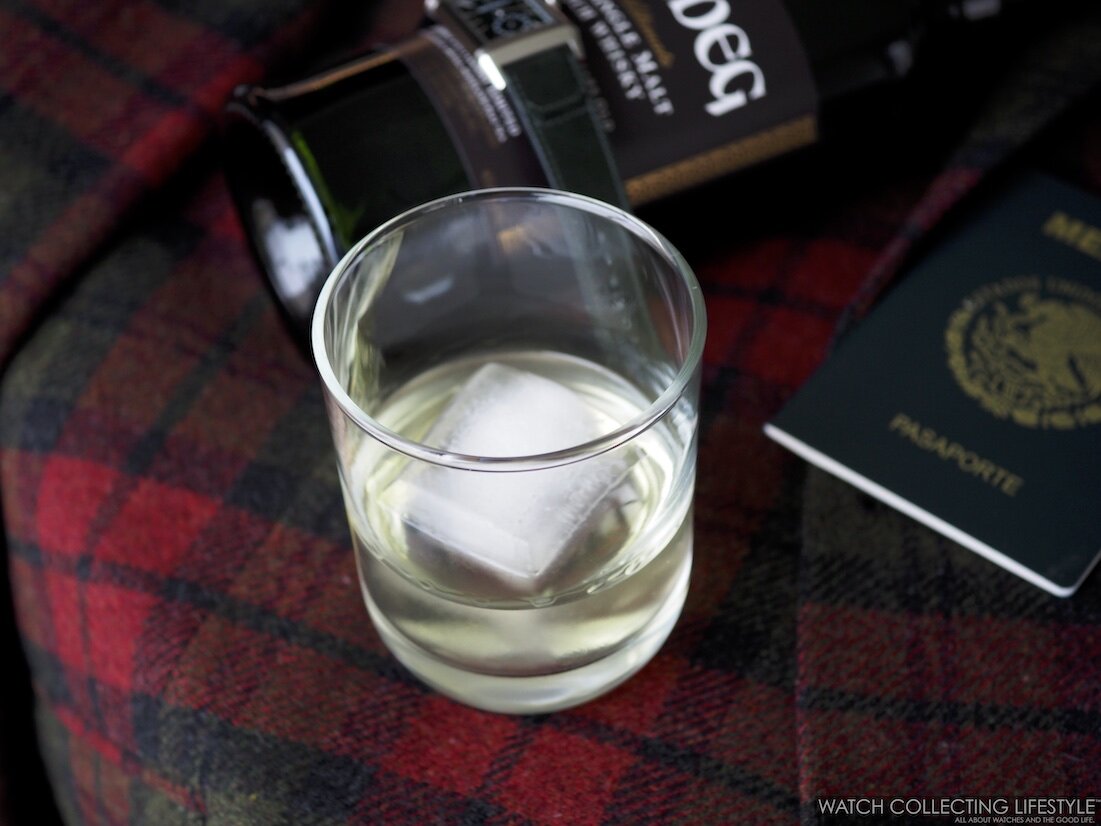Scotland gives the world some of the most beautiful landscapes and two things they excel at, their tweed and their scotch. Honoring the green luscious landscapes of Scotland and the deep green bottle of Ardbeg 10 Years, we decided to pair this Islay Single Malt with the new Jaeger-LeCoultre Reverso Tribute Small Seconds Green. Ardbeg Ten Years Old was launched in 2000 as an extraordinary balance of peaty notes and floral sweetness that makes it one of the best single malt whiskies in the world.
Ardbeg Ten Years Old is revered around the world as the peatiest, smokiest, most complex single malt of them all. Yet it does not flaunt the peat; rather it gives way to the natural sweetness of the malt to produce a whisky of perfect balance. Named World Whisky of the Year in 2008 and 2009, Ardbeg Ten Years is as unique in taste as it is potent in terms of the content of alcohol at 46% ABV.
The notes from Ardbeg Ten Years Old are as complex as the patterned fabric that makes Scottish tweed the finest in the world. To put it in simple words, tweed is a fabric made from dyed, spun, and woven wool from sheep. It originated in Scotland in the early 18th century, coming from the outsized looms that spit out yardage from yarns originally dyed with the native lichen and wildflowers of the region.
The Ardbeg Distillery was founded in 1815 on the remote Scottish island of Islay. A wild and untamed place, where Celtic monks found refuge from raiding Norsemen and early distillers smuggled their illicit "aquavitae" at Ardbeg's rugged rocky cove, magic happens. After shutting down in 1981, resuscitated in 1987, and shut down again in 1991, Ardbeg was acquired by Glenmorangie in 1997. Since then, the distillery has remained open and its single malt Scotch whisky has shipped all over the world.
Ardbeg Ten Years has a light pale gold color and the peatiest aromas on any other Islay whisky we typically like to drink. A charge of intense smokiness and distinct menthol and black pepper notes fill the nose as one sips through it.
The casks used at Ardbeg come from various sources with a prevalent use of former Bourbon oak barrels. In maturation, only first and second-fill casks are used. All the first-fill Bourbon casks come from suppliers in the US, while the other casks come from Speyside Cooperage and Craigellachie. Only a handful of French Oak barrels are used for other varieties of Ardbeg. Because Ardbeg sits very close to the sea, the whisky receives a certain salty, iodine character while it matures which makes the notes on the palate as unique as the aromas on the nose.
An explosion of crackling peat sets off millions of flavor explosions. First peat effervesces with tangy lemon and lime juice, and black pepper then pops with sizzling cinnamon-spiced toffee. Lastly, a wave of brine infused with smooth buttermilk, ripe bananas, and currants hits the back of your tongue. Smoke gradually wells up on the palate bringing a mouthful of warm creamy cappuccino and toasted marshmallows. As the taste lengthens and deepens, dry espresso, licorice root, and tarry smoke develop coating the palate with chewy peat oils. Slàinte and Happy Holidays!
For more info on Jaeger-LeCoultre click here and for Ardbeg here.
























